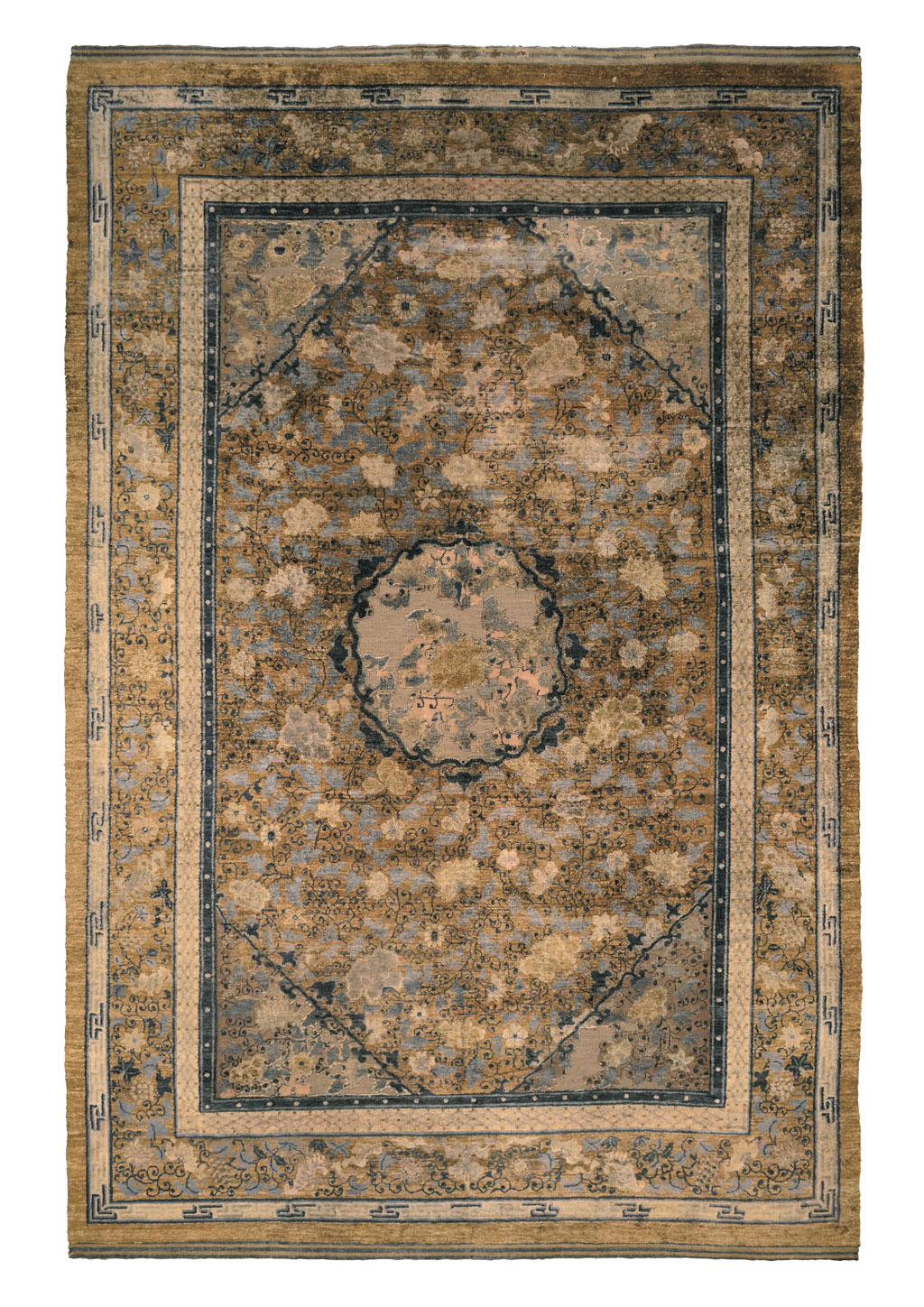Imperial Workshops of Xinjiang
China
Qing dynasty (1644-1911)
Kangxi period (1662-1722)
268 x 400 cm
Asymmetrical knot
Silk pile, gilded copper threads
Cotton warp and weft
Fair condition related to age,
areas of low pile, large holes in the metal threads in the center and in the four corners, one ideogram missing in the inscription
The inscription reads:
Zhonghedian Beiyong
Made for the Hall of Central Harmony
Provenance:
Ritchies inc., Toronto
Bruun Rasmussen Kunstauktioner, Copenhagen
IMPERIAL CARPETS – THE MEANING OF FLOWERS
The dominant image present in the carpet is that of the flower, symbolic of the very essence of nature. In the Chinese language, the word flower, hua “花”, is formed by the character “化”, which indicates the transformations occurring in the plant world.
Emerging from the mud, lotus flowers were a highly regarded symbol of Buddhist purity and enlightenment. Almost all the superior divinities of Buddhism are shown in the standing position or seated upon flowering lotuses.
Bodhisattvas’ feet are held up by a lotus in memory of the legend that flowers bloomed at every step taken by Buddha; enlightenment is thus associated with a carpet of flowers. A carpet bearing the lotus flower motif becomes in itself a transcendent vehicle between earth and heaven.







